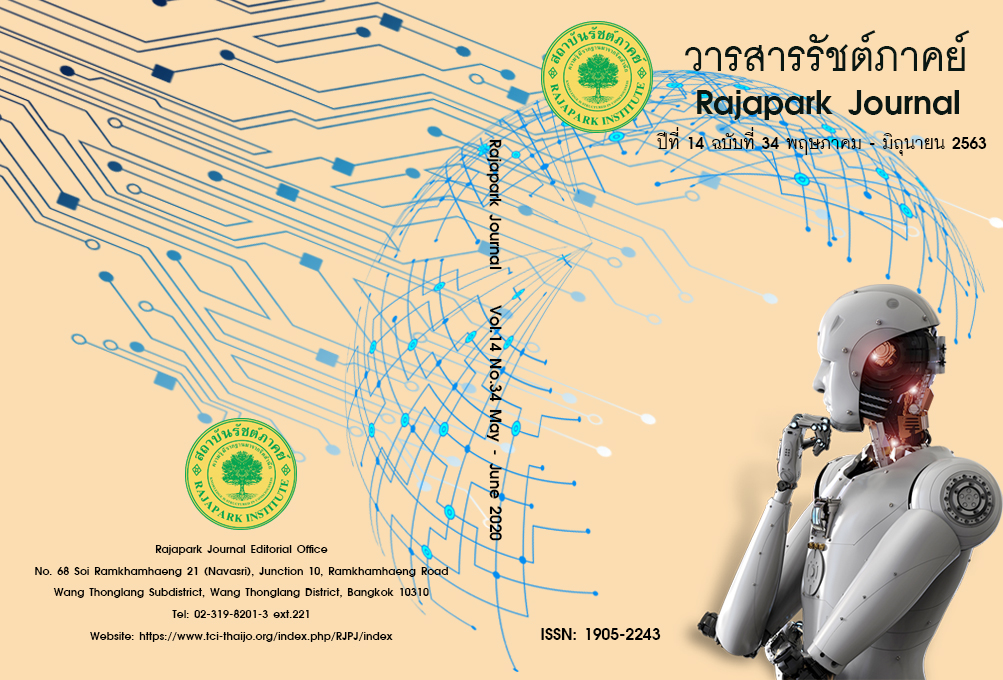Study and design of Ko Kret community pottery products, Nonthaburi Province
Main Article Content
Abstract
2) for designing Ko Kret community pottery products Nonthaburi Province and 3) to assess the marketing satisfaction of consumers in Ko Kret community Nonthaburi Province, By using Mixed Methods Research, using interviews with experts in pottery making Ko Kret Nonthaburi Province 6 people and questionnaires used for tourists and local people Ko Kret community. The samples were 100 samples by simple random sampling. The instrument consisted of interview form and questionnaire with scale estimation level 5 Data were analyzed by using content analysis and descriptive statistics such as percentage, mean, and deviation standard. The results showed that 1) Ko Kret is a large island. Located to the west of Pak Kret district Nonthaburi Province surrounded by the Chao Phraya River in which the soil used to make pottery is clay, rice
fields and the clay of the river mouth sediment which is clay that is tough, fine texture, has few grains of sand and other debris, has a soft color or a yellowish color. 2) The second type of pottery product design is the most suitable (M = 4.51, SD = 0.51). It is suitable to produce prototype pottery products. 3) The satisfaction of the consumer market overall is at a high level (M = 4.28, SD = 0.87)
Article Details
Views and opinions appearing in the Journal it is the responsibility of the author of the article, and does not constitute the view and responsibility of the editorial team.
References
Boonphuk, P. (2007). Nonthaburi earthenware. Nonthaburi: Academic Publishing project for
Society, Sukhothai Thammathirat Open University.
Chaichan, K (2008). The potaintial for entrepreneur or Dankwian’s pottery. Faculty of
Management Science, Nakhon Ratchasima Rajabhat University.
Jarmrick, S. (1990). Concept of Thai Education Development: Preliminary Analysis. Bangkok: Local
Development Foundation.
Keawkabin, S. (2007). Ceramic local wisdom development of Ko Kret community for OTOP product
champion. Master of Arts (Social Sciences for Development) Graduate School.
Chandrakasem Rajabhat University.
Kiatnakin, S. (1994). Pottery design (2nd ed.). Ubon Ratchathani Teachers College.
Leesuwan, V. (2003). Handicraft Dictionary Folk utensils. Bangkok: Muang Boran.
Na Thalang, E. (1997). Folk wisdom of four regions: ways of life and learning process of Thai
villagers. Nonthaburi: Sukhothai Thammathirat Open University.
Ngamniyom, A. (2001). A survey of acquiring, recording and transferring knowledge of the fine art
water pottery earthenware of the Mon Koh Artisan. Bangkok: Kasetsart University.
Phongphit, S. (1993). Local Wisdom and Rural Development. Bangkok: Amarin Printing Group and
Publishing.
Praebaisri, J. (2008). Study and development of Ko Kret pottery. For garden decoration. Bangkok:
King Mongkut's Institute of Technology Ladkrabang.
Prompruek, T. (1980). Preliminary porcelain. Bangkok: Odean Store.
Ruaisungnoen, S., & Chantaree, T. (2011). Design for Value-Added Isan Earthenwar. Built
Environment Inquiry Journal Faculty of Architecture Khon Kaen University, 10(1), 117-125.
Sereerat, S. et al. (1998). Marketing strategies and marketing management. Bangkok: Diamond in
Business World.
Srisawad, S. (2003). The Application of English Paper Craving Technique on Koh Kred Handcraft:
A Case Study on Lampshade. Master of Industrial Education. King Mongkut's Institute of
Technology Ladkrabang.
Suttipan, A. (1984). Design. Bangkok: Thai Wattana Panich.
Tangadulrat, L. (2005). Marketing Strategy of Dan Kwian Pottery Community Business. Master of
Business Administration. Maha Sarakham University.
Thai Encyclopedia for Youth (saranukromthai), Volume 23, (2008). Title 1 Thai wisdom. Retrieved
from http://saranukromthai.or.th/sub/book/book.php?book=23&chap=1&page=chap1.htm


